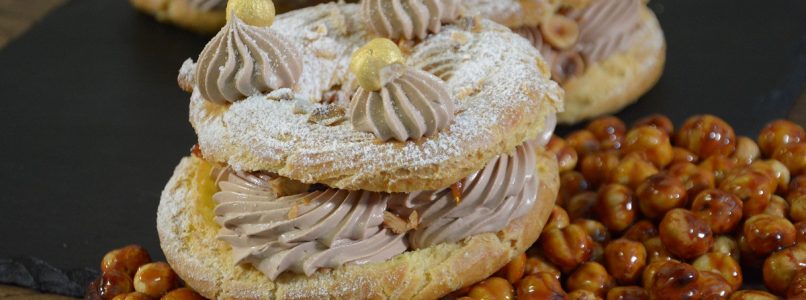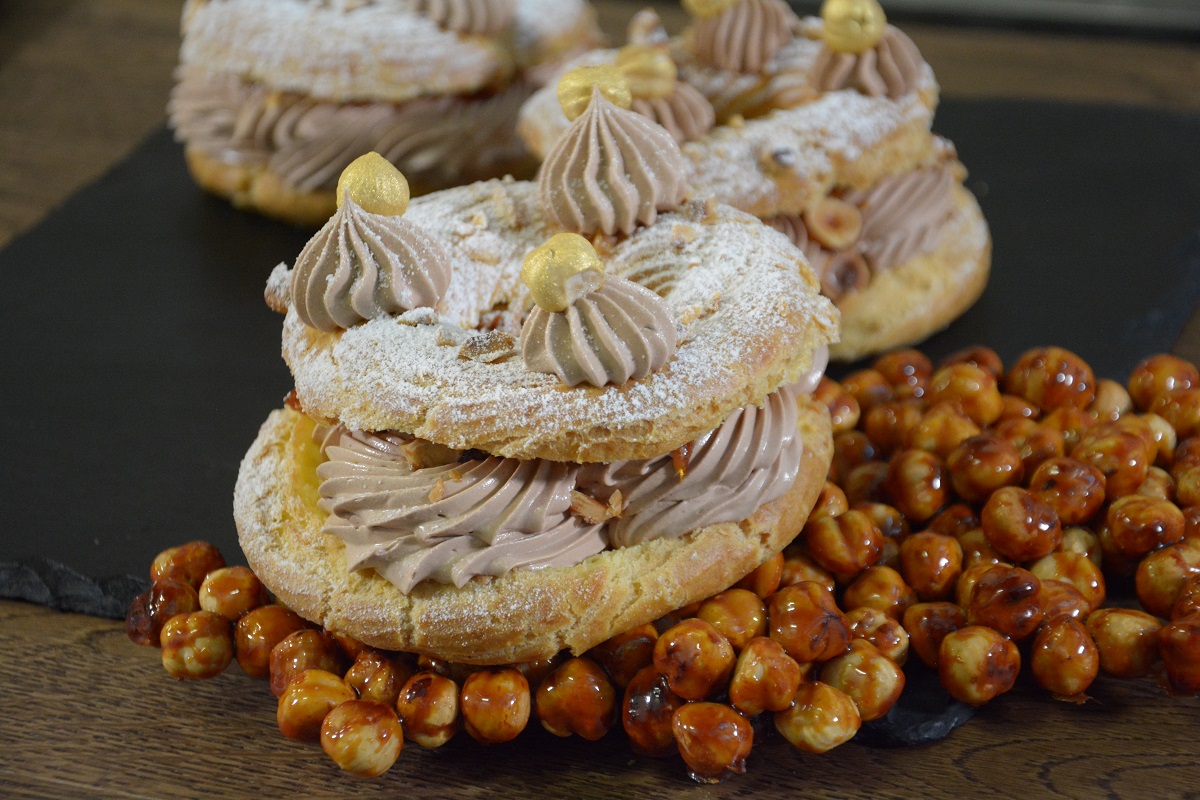Paris Brest, the preparation
For the puff pastry: 170 g of flour 00 – 110 g of butter – 250 g of eggs – 125 g of water – 125 ml of milk – 3 g of salt
For the caramelized hazelnuts: 200 g of roasted whole hazelnuts – 60 g of sugar – 20 g of water
For the meringue buttercream: 340 g of soft butter – 200 g of sugar – 80 g of egg whites – 45 ml of water – 80 g of dark chocolate
1) Prepare the puff pastry. Bring to a boil milk, water, butter, sugar and salt, then unite in one go the sifted flour e cook until the dough comes off the walls creating a ball.
2) Do cool down slightly, move to a planetary mixer and add little at a time the eggs. Put the mixture in one sac à poche with a striped nozzle and create some rings of about 10/15 cm in diameter.
3) Decorate them with some chopped hazelnuts. Cook a 175 ° for 10 minutes placing a bowl with water in the oven so that it creates humidity, then lower the temperature to 170 ° and cook for another 20 minutes.
4) Prepare the caramelized hazelnuts. Caramelize sugar and water a 185 °, add the hazelnuts, then spread out on a baking tray and let cool. Leave some of it whole for decoration. The remaining part chop it with a knife.
5) Prepare the meringue buttercream. Mounted the egg whites in a planetary mixer with two tablespoons of sugar.
6) In a saucepan prepare the syrup of water and sugar and bring to 121 °. Pour in the syrup flush in the planetary mixer to prepare the Italian meringue.
7) Add the softened butter and melted chocolate.
8) Assemble the cake. Cut the ring in the middle, stuffed with meringue cream and decorated with caramelized hazelnuts, then close with his hat.





